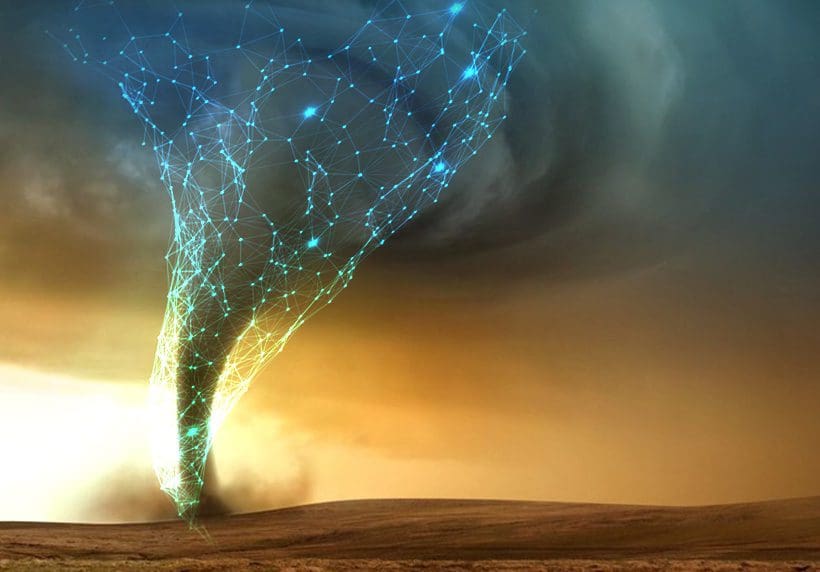
WGI Unleashed Episode 89: Lyndsey Duty, Environmental Scientist
On the latest episode of the WGI Unleashed podcast, we sit down with Lyndsey Duty, one of WGI’s Environmental Scientists based out of our Tampa, FL office!
Learn from award-winning professionals — explore our whitepapers, blogs, and the latest industry updates.
Join our dynamic organization of engineers, land surveyors, landscape architects, environmental scientists, and architects!
Talk to a market leader today! We’ll answer any questions you have about our professional services.

Click Here to Download a PDF of this Whitepaper
Tornados, hurricanes, and other windstorm events can be deadly and strike without warning. According to the Insurance Information Institute, in the United States, tornados kill 70 people and cause $400 million dollars in damage each year; annual losses caused by hurricane winds total $54 billion. That’s why, in communities susceptible to tornados and hurricanes, storm shelters are an essential part of building design.
Storm shelters are specialized structures designed to protect people during a severe windstorm event. There are two primary types, community storm shelters, and residential storm shelters. Community storm shelters are commonly for places with more than 50 occupants and serve the general public. Residential storm shelters serve residential buildings with 16 or fewer residents.
Since the release of the 2015 International Building Code (IBC), storm shelters built in accordance with the ICC-500 code are required when located in a 250-mph wind-speed zone for tornados. In the United States, the impacted area includes much of the Midwest and central southern states, from Texas in the south to Minnesota and North Dakota in the north, and Kansas and Nebraska in the west to Ohio, Kentucky, and Tennessee in the east. Building occupancy types require shelters to include education groups — from grade schools through universities — as well as critical public services facilities like police stations, fire stations, and other emergency services centers. It is important to note that the code excludes this requirement for daycare facilities and places of worship. The code also includes expansions to existing facilities that fit these criteria.
As a result of those 2015 changes to the IBC, construction requirements are more stringent. They include higher levels of coordination in the building design and more effort by the general contractors to ensure the shelters are built as designed and detailed. Contractors now must provide letters of responsibility to the municipalities that oversee the permits for these structures, stating they are aware of the additional effort involved.
Storm shelters come in all forms. Some are standalone structures while others are designated rooms within a building or complex. For example, school music halls are often used as storm shelters because they tend to have sufficient room and reinforced walls for soundproofing purposes. Conversely, utilizing cafeterias as shelters requires more effort because they tend to have more windows that can be damaged or destroyed during storm events. For this reason, it is important to plan the location of your shelter very early on in your design efforts.
When considering where to place the shelter, it is important to consider both its location in the building’s program and its vertical location. Ground-floor shelters are typically the safest, most cost-effective choice — but sometimes the ground floor isn’t an option. Locating a storm shelter on the second floor increases the development cost by 15-20% because the shelter must be developed as a separate box that’s suspended in the air. In this situation you have many more factors to consider including uplift, overturning, secondary force effects from building drift, and overall higher reactions at your foundation. If your only choice is to put a shelter on stilts, you are strongly encouraged to consider and design the space below as a shelter as well.
Ventilation is an essential element of storm-shelter design. A key consideration is whether to mechanically or naturally ventilate the space. This is one of the most important decisions that goes into storm-shelter development. It’s important to provide a comfortable environment for occupants, but it’s equally vital to keep debris out of the building. There are many variables that go into this decision, including the available development budget, the size of the space, and whether it’s intended to serve adults or children. Natural ventilation is less expensive, but much louder. Noise is an important factor for spaces intended to protect children because loud storms are extremely frightening. Also, it is important to consider the amount of forces and air movement in natural ventilation designs. Shelters meant primarily for children may not be a good fit for natural ventilation as the vents will allow infiltration of a large volume of air. Baffles or marked zones on the floors can be used to keep people away from low cross ventilation but this will be detracted from your useable space.
Conversely, in shelters designed to protect police or fire professionals, noise is a lesser issue. For these facilities, more focus is on maximizing usable square footage as there is generally not much available. The noise and pressure may have little impact on police and fire fighters, therefore making natural ventilation a viable option.
There are also choices in which materials to use. For smaller rooms, Concrete Masonry Units (CMU) work best with composite steel roofs. For larger spaces like theaters or cafeterias, a better choice is precast concrete wall panels and precast double Ts. Both have their advantages and disadvantages on the design and construction side. For larger rooms, cast-in-place concrete will also work, but this approach is more expensive and requires more skilled labor to properly develop. You must also consider your schedule to allow time for forming and concrete curing. The primary reason to pursue the cast-in-place approach is if the contractor is more comfortable working that way, rather than using a precast concrete system.
Hardware is another element that must be considered, especially doors and windows. Improperly located and installed doors can weaken a storm shelter. Doors and windows should be located away from shelter corners.
The walls with windows and doors should be as solid as possible. It is vitally important that only hardware meeting the code’s minimum-testing requirements is used in tornado shelters. Additionally, fire extinguishers shouldn’t be recessed into walls because this removes CMU and weakens the protective barrier the wall provides.
When installed, the walls, doors, and roofs need to be tested to extremely specific specs, such as tornado missile testing. This test launches a 2×4 projectile into walls and doors at speeds of up to 100 mph to determine whether the shelter component will withstand typical storm conditions. It’s essential to rigorously test all hardware and external wall assemblies for the impact force of debris, including mechanical screens such as louvers. All openings, including joints, gaps, or voids in shelter envelopes that are greater than 3/8 inches must be protected. The ICC 500 code provides all the necessary testing criteria these components must meet.
A final consideration — one WGI receives many questions on as both a designer and peer reviewer for shelters — is whether to connect the shelter to the host building. Typically, this is not a recommended practice, primarily because the ICC 500 code requires you to design that connection to the full force up to failure. That means the shelter must resist the storm loading, plus whatever ultimate failure load that connection can resist. If the host building is connected, there must be break-away connections between the building and shelter to assure that a host building’s structural failure will not impact the shelter. This is difficult to achieve, considering the limited resources and research currently available. Generally, it will come down to a matter of engineering judgment. WGI encourages designers in this situation to consult early with their peer reviewer to establish a dialogue about requirements and interpretation of the code.
WGI’s team of structural engineers are experts at working with building owners to determine exactly what type of storm shelter is best for each individual situation.
Even after these choices are made and a storm shelter’s design is complete, the process is far from over. It’s essential to engage an independent registered reviewer to assess all of the plans, calculations, and quality assurance documents for general compliance with the current code. During the design process, additional reviews should be completed at 50% and 90% of design. WGI recommends a third follow-up review just prior to building permit submittal. If the reviews raise any concerns or questions, additional reviews should be completed as required to meet general conformance with the code.
The independent review process protects the owner and the occupants of the shelter and, in some ways, can help the shelter’s design team, too. A second pair of eyes helps diminish the probability of human error. It is important to remember responsibility for the shelter design falls on the architect and engineers of record — their judgement, their expertise, and their seal are affixed to the plans and details. A peer reviewer is a recommended necessity, but no replacement for the designer’s responsibilities. WGI’s storm-shelter experts can also provide independent peer reviews, and designs for new shelters. The development of a storm shelter represents a significant investment, and it’s important that essential aspects receive proper consideration and critical elements meet the stringent code requirements. WGI’s independent reviewers can provide peace of mind, assuring that your storm shelter is properly designed and reviewed.

WGI is a national design and professional services firm leading in technology-based solutions for the construction of public infrastructure and real estate development. At WGI, we’re providing Tomorrow’s Infrastructure Solutions Today.

On the latest episode of the WGI Unleashed podcast, we sit down with Lyndsey Duty, one of WGI’s Environmental Scientists based out of our Tampa, FL office!

WGI’s San Antonio team laced up their running shoes and braved the rain to take on the iconic Rock and Roll 5K – Discover how they turned challenges into triumphs in this memorable event recap!

With a legacy of supporting, empowering, & inspiring women in transportation, the WTS Central Florida’s Annual Awards & Scholarship Banquet was nothing short of a night to remember.

Discover how Austin is transforming urban development with proposed zoning changes, inclusive housing initiatives, and creative space preservation—all while embracing growth and sustainability.

Texas Medical Center made $78M from parking last year. Why haven’t its busiest garages been upgraded in years?

Discover how WGI helped bring Lively Lane to life—a vibrant community in San Marcos that blends sustainable design, live/work townhomes, and natural beauty to create the perfect balance of urban convenience and serenity.
You’ve been searching for a place like WGI. We look forward to meeting you soon.

Tornados, hurricanes, and other windstorm events can be deadly, and strike without warning. According to the Insurance Information Institute, in the United States, tornados kill 70 people and cause $400 million dollars in damage each year; annual losses caused by hurricane winds total $54 billion. That’s why, in communities susceptible to tornados and hurricanes, storm shelters are an essential part of building design.
WGI’s independent reviewers can provide peace of mind, assuring that your storm shelter is properly designed and reviewed.
WGI © 2020 | 2035 Vista Parkway, West Palm Beach, FL 33411
Sign up to receive emails to hear our latest news and achievements in our monthly newsletter.
Enter your zip code, and we’ll personalize your experience with local projects, office locations, team members, and more.
WGI supports its associates with meaningful opportunities for growth, strong benefits and perks, while we work collaboratively with clients and co-consultants to shape and improve communities.






WGI is a dynamic organization with opportunities nationwide for engineers, land surveyors, landscape architects, environmental scientists, and architects.